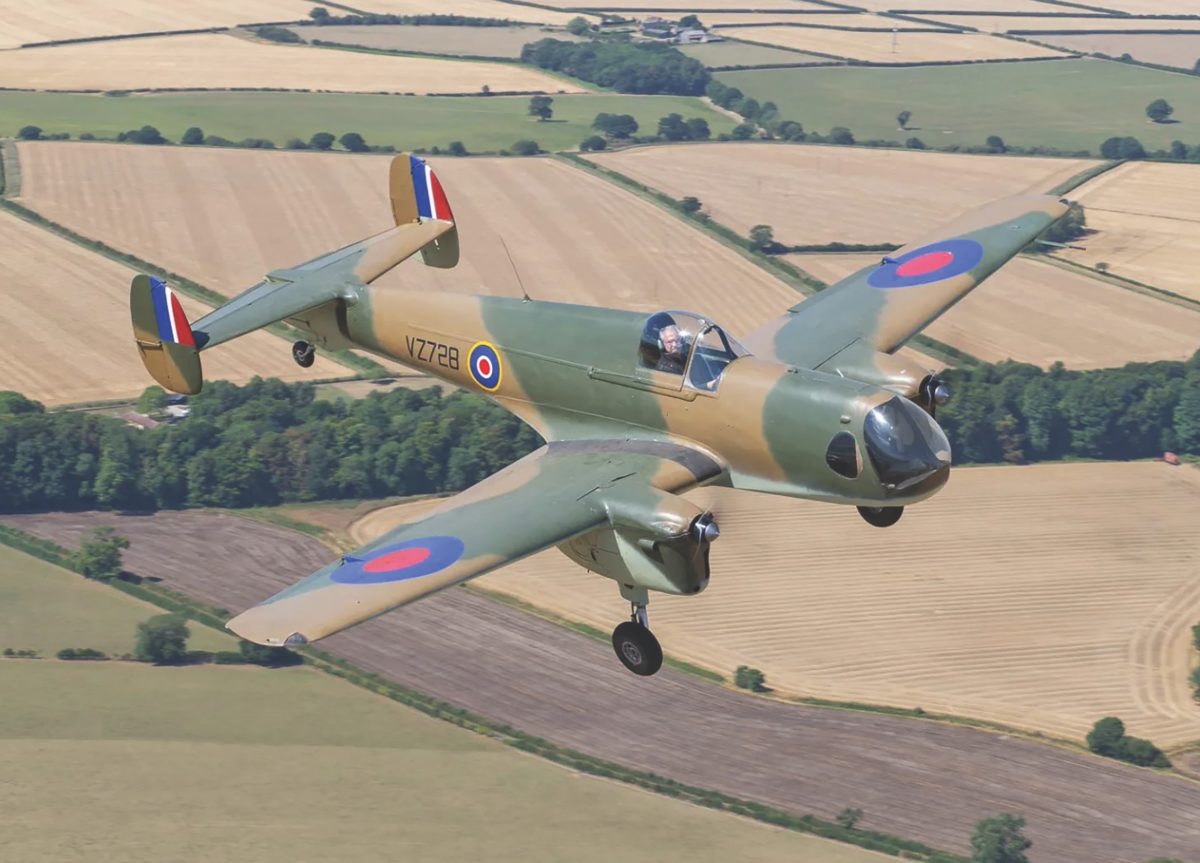In February 1928, Royal Air Force Squadron Leader (retired) George Hancock Reid and Frederick Sigrist established Reid and Sigrist Ltd. Among other things, the company was a successful instrument manufacturer, and in World War II it served as part of the British Air Ministry’s Civilian Repair Organisation, repairing and modifying aircraft. In 1937 the firm established an aircraft division in Surrey, with modest ambitions centered around development of a next-generation twin-engine training aircraft. The first, designed and test flown in 1939, was the R.S.1 Snargasher (a meaningless name that the company said was adopted as an inside joke). A three-seat trainer with ground attack capabilities, powered by two 205-hp de Havilland Gipsy Six II Series II inverted inline engines, the R.S.1 failed to get a production contract, but it did serve as a company taxi from its home aerodrome at Desford.
Reid and Sigrist’s next project, designed by Charles Bower, was similar to the R.S.1, but intended as something more economical, with the R.S.1’s Gipsy Sixes replaced by two 130-hp de Havilland Gipsy Major 30 Series I four-cylinder engines and with the crew reduced to two. With a wingspan of 34 feet, a length of 25 feet 6 inches, a height of 8 feet 2 inches and a maximum weight of 3,550 pounds the R.S.3 Desford—named for the aerodrome—had a maximum speed of 181 mph, a cruising speed of 170 hp, a climb rate of 1,416 feet per minute and a range of 523 miles or 4½ hours.
The R.S.3 made its first flight test on July 9, 1945. World War II in Europe was over and the Pacific war was nearing its end, but Reid and Sigrist intended their redesign to start a new postwar generation of low-powered advance trainers. As a private venture, the R.S.3 was evaluated at the Royal Aircraft Establishment at Farnborough. It received good grades but that was not enough to convince the RAF to adopt it with so many perfectly good war-surplus trainers readily available.
That would have been the end of it, had Reid and Sigrist not learned that the RAF was studying the effects of the g forces generated by high-speed jet flight on prone pilots. Reid and Sigrist did some modifying of their own on the R.S.3 to produce the R.S.4 Bobsleigh. The fuselage received a radical facelift, with a glazed nose for the prone trainee that increased the airplane’s length to 26 feet 9 inches. It first flew on June 13, 1951, and underwent testing at Farnborough in parallel with the RAF’s work with a modified “prone pilot” Gloster Meteor F8. When the Meteor’s testing ended in January 1956, with a conventional pilot retained, the Bobsleigh was returned to its builders and served as an air photography plane for Film Aviation Services until 1973. The R.S.4 was eventually restored to flyable condition in Northhamptonshire and on April 22, 2018, it returned to the air. On August 19, 2022, the Bobsleigh was delivered to the Newark Air Museum, Nottinghamshire, where it is now on static display.






